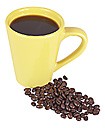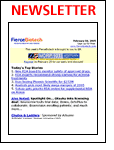
I really am always too busy to drink my coffee as soon as it’s poured, and as a chemist I should know whether to add the cold milk or cream right away or when I come back to it, to make sure I have the hottest cup of coffee.
Anyway, I now know the answer. My wife somehow knew intuitively. But, if you want to confirm the idea that you should add milk or cream as soon as the coffee’s made, check out our science experiments section where we have just added details of a cool coffee experiment.
Simple instructions for finding out whether you should add cold milk or cream to your coffee right away if you’re not going to drink it immediately to make sure it’s as hot as it could be when you actually drink it.
Fill two plastic cups (styrofoam beakers), with the same quantity (150g) of water at the same temperature (use a lab thermometer* to check).
Next add 20g of cold water to one beaker.
Wait seven or eight minutes or so and add the remaining cold water to the other cup.
After ten minutes, you will not a 2-3 degrees Celsius difference between the two cups. The colder cup will be the one to which cold water was added last. If you want to know why, check out our topics in thermodynamics page for links to thermodynamics tutorials.
*Two Vernier sensors one in each cup would be ideal as it can record temperatures at regular intervals and display the charts on your PC.
For more science experiments, check out our science fair projects partner.
